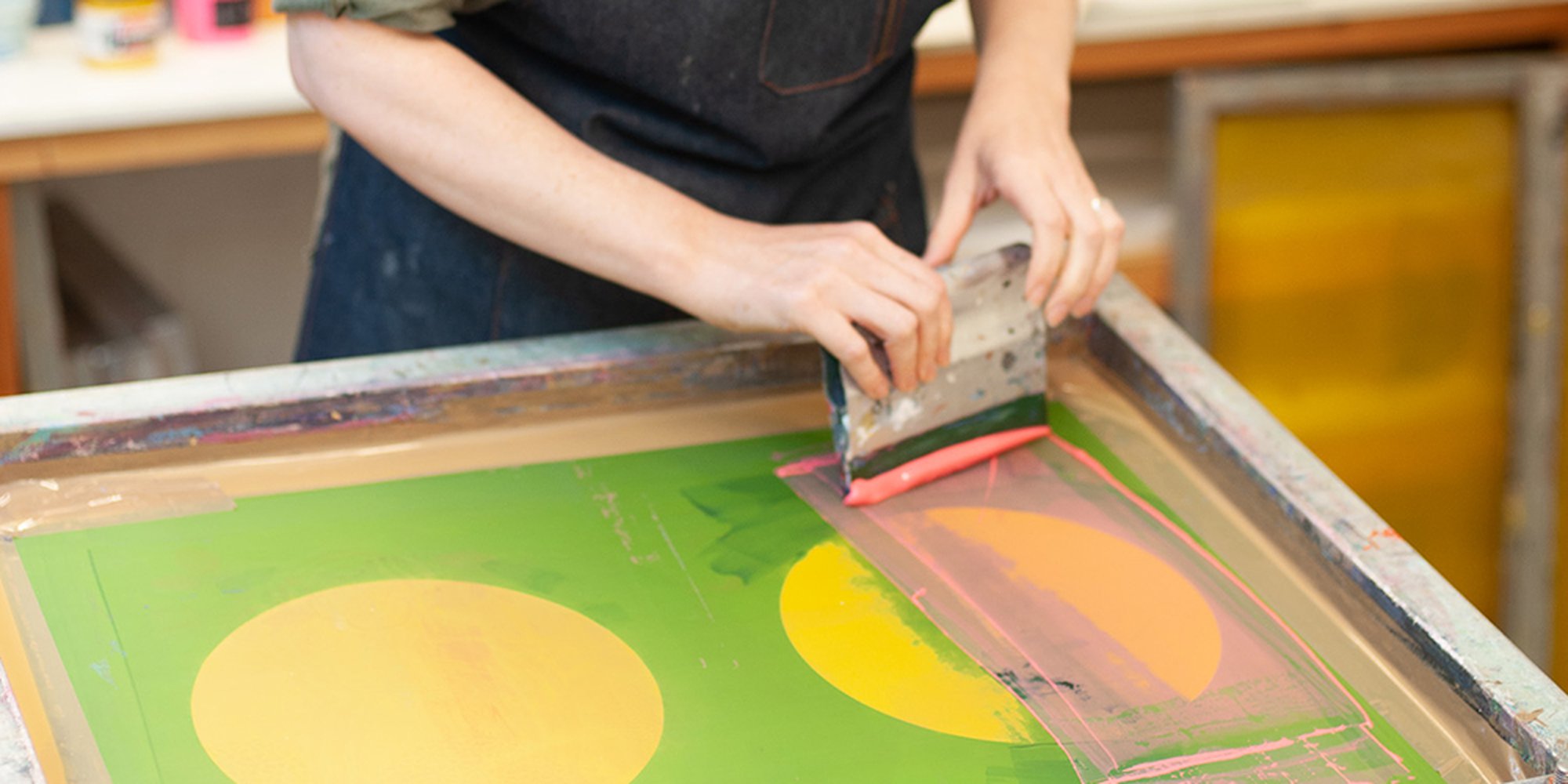ChatGPT said: Best ways to connect with 10:9 Design contact for service inquiries
The Vital Guide to Comprehending Screen Printing and Its Versatile Makes use of
Screen printing has an abundant background that goes back to ancient times, developing into an advanced method made use of throughout various markets today. This overview checks out the complexities of the screen printing procedure, outlining its applications in advertising, style, and home design - 10:9 Design LLC Company. Comprehending these principles can open up imaginative possibility for both imaginative and business projects. The following sections will reveal vital pointers and methods to enhance one's screen printing ventures
The Background of Screen Printing
Although screen printing has origins that trace back centuries, its evolution mirrors the imaginative and technical innovations of different cultures. Coming from old China, the strategy was at first used for enhancing textiles and later infect Japan, where it became integral to Ukiyo-e woodblock printing. The approach changed to Europe in the 18th century, where it got popularity amongst artisans and business printers. The invention of image solution in the 20th century revolutionized screen printing, permitting even more complex layouts and greater efficiency. Artists like Andy Warhol better pushed its appeal, utilizing the tool to develop famous jobs that mixed commercialism and art. By the late 20th century, screen printing had developed itself as a versatile method, employed in style, advertising, and art. Today, it remains to develop, incorporating electronic innovation and increasing its applications throughout various markets.
The Screen Printing Refine Explained
Screen printing transforms artistic visions into concrete designs through a series of exact actions. A photo is produced and then moved onto a screen, normally made of fine mesh fabric stretched over a structure. A light-sensitive solution is applied to the screen, which is subjected to light, hardening in locations not covered by the picture. After washing out the unhardened solution, a pattern is created.
Next, the screen is placed over the substrate, whether it be material, paper, or one more product. Ink is then pressed via the open locations of the pattern utilizing a squeegee, transferring the style onto the substratum below. This process can be repeated for several colors, requiring separate screens for each hue. The published product is treated using warmth to ensure the ink adheres correctly, resulting in a resilient, vibrant layout ready for use.
Sorts Of Screen Printing Techniques

Additionally, specialized strategies, such as discharge screen printing, get rid of color from the fabric to produce softer prints, while foil screen printing applies metal foil to attain a shiny surface (10:9 Design Screen Printing Texas). Each technique provides distinctive features, satisfying numerous innovative demands and production ranges, eventually expanding the possibilities within the screen printing domain
Applications of Screen Printing in Different Industries

Additionally, the signs and advertising fields make use of screen printing for creating attractive display screens and banners. This approach permits vibrant colors and elaborate designs that capture focus. In electronics, screen printing is used for applying conductive inks to motherboard, crucial for element connections. The home décor industry welcomes screen printing to produce unique designs on textiles and wall surface art. On the whole, screen printing works as a crucial device across varied fields, improving products with individualized and aesthetically appealing graphics.
Tips for Effective Screen Printing Projects
While embarking on a screen printing job, careful attention to information can considerably improve the final result. Initially, choosing top notch products is essential; this consists of the screen, inks, and substratums. Using appropriate mesh matters can influence ink deposition and information resolution. Preparation is similarly crucial; complete cleansing of displays and correct exposure times ensure crisp prints.
Next, accurate enrollment is critical for multi-color prints. Using positioning devices can assist attain accurate layering. In addition, screening prints on scrap materials prior to manufacturing helps recognize possible get more info problems without throwing away resources.

Regularly Asked Concerns
What Materials Are Ideal for Screen Printing on Textile?
Cotton and polyester blends are ideal for screen printing on fabric as a result of their resilience and ink absorption. Furthermore, specialty textiles like silk or canvas can generate one-of-a-kind appearances and finishes, improving the overall style quality.
Exactly how Do I Clean and Maintain Screen Printing Devices?
To maintain and cleanse screen printing tools, one need to consistently clean displays with ideal solvents, evaluate mops for wear, lubricate moving components, and store all products in a completely dry, dust-free environment to prolong their life expectancy.
What Are the Ecological Effects of Screen Printing?
Screen printing can have considerable ecological impacts, including chemical waste from inks and solvents, water use during cleaning processes, and power consumption. Lasting techniques and eco-friendly products are necessary for decreasing these adverse impacts.
Can Screen Printing Be Done in your home Effectively?
Screen printing can be properly done at home with the appropriate products and methods. Hobbyists can develop top quality prints, though success relies on their skill degree, devices, and understanding of the procedure included.
What Are the Prices Linked With Starting a Display Printing Company?

Beginning a screen printing service involves costs for equipment, materials, and office. Initial costs generally vary from a few hundred to a number of thousand bucks, relying on the scale, quality of machinery, and preferred manufacturing capability.
Screen printing has a rich history that dates back to ancient times, developing into an innovative technique utilized throughout numerous markets today. One more technique, rotary screen printing, employs cylindrical screens, facilitating constant printing on textile rolls, thus boosting efficiency for large-scale productions. Additionally, specialty methods, such as discharge screen printing, get rid of dye from the fabric to develop softer prints, while aluminum foil screen printing applies metal foil to achieve a glossy finish. In the style field, screen printing is extensively made use of to develop dynamic layouts on apparel, allowing brand names to display their one-of-a-kind designs. Cotton and polyester blends are ideal for screen printing on material due to their toughness and ink absorption.